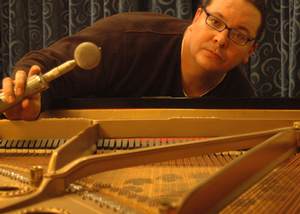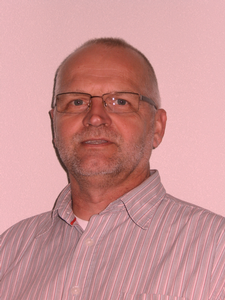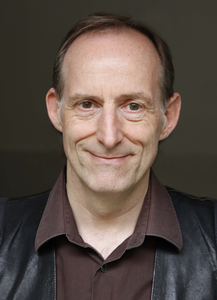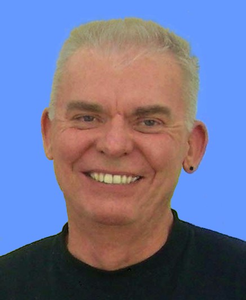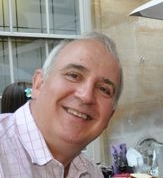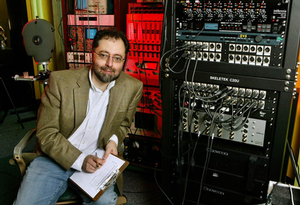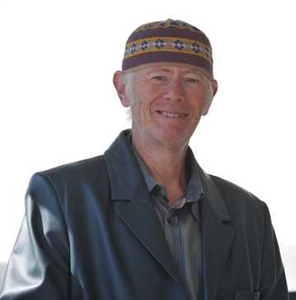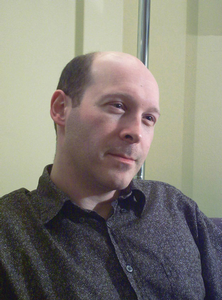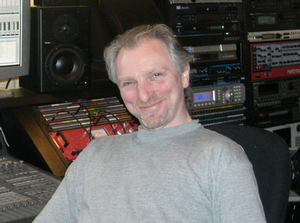
AES New York 2013
Tutorial Details
Thursday, October 17, 9:00 am — 10:30 am (Room 1E13)
T1 - FXpertise: Compression
Presenter:Alex Case, University of Massachusetts Lowell - Lowell, MA, USA
Abstract:
Compressors were invented to control dynamic range. The next day, engineers started doing so much more—increasing loudness, improving intelligibility, adding distortion, extracting ambience, and, most importantly, reshaping timbre. This diversity of signal processing possibilities is realized only indirectly, by choosing the right compressor for the job and coaxing the parameters of ratio, threshold, attack, and release into place. Learn when to reach for compression, know a good starting place for compressor settings, and advance your understanding of what to listen for and which way to tweak.
Thursday, October 17, 9:00 am — 10:30 am (Room 1E14)
T2 - Acoustic Enhancement Systems—The Basics
Presenter:Ben Kok, SCENA acoustic consultants - Uden, The Netherlands
Abstract:
In the last decades multiple systems for electronic acoustic enhancement have been introduced. Some have disappeared over time but others appear to be settled firmly. The claim for these systems is that the acoustics of a venue can be changed at the press of a button, at cost significantly lower than variable acoustics by structural means. Also, in situations where the natural acoustics did not work out properly, these systems are used to correct the flaws, again at lower costs than the structural alternatives. The question, of course, is do these systems really work and if so, what are the differences between these systems? And what would be the structural alternatives?
This tutorial will identify what acoustic properties can or should be influenced by an acoustic enhancement system. In relation to this, working principles and philosophies of some of the most popular systems are analyzed and similarities and differences are identified and related to specific acoustic situations.
 | This session is presented in association with the AES Technical Committee on Acoustics and Sound Reinforcement |
Thursday, October 17, 10:30 am — 11:15 am (Room 1E11)
T3 - 3D Audio—Experience the Sound of the Future
Presenter:Tom Ammermann, New Audio Technology GmbH - Hamburg, Germany
Abstract:
The experience of listening to 3D audio is an amazing adventure! It's available in large cinema environments now, but will it arrive in home applications and also on mobile entertainment anytime? And furthermore, how will content be created and edited and which tools are capable to enable this? Is it a large investment of money and time to enhance the skills of the engineers? These questions will be discussed and many 3D audio examples of different genres will be shown. These questions will be discussed and many 3-D audio examples of different genres like music, game, and film will be shown at the dedicated listening session at NYU on Saturday.
Thursday, October 17, 11:15 am — 12:00 pm (Room 1E11)
T4 - Auro 3D—Discovering the Ceiling for Stereo and Surround
Presenter:Malgorzata Albinska-Frank, Tonstudio arton, Das Tonstudio für klassische Musik - Basel, Switzerland
Abstract:
The 3-D sound (especially Auro 3D sound) dominates our production studios more and more. At the same time the listening and work habits among professionals and music lovers are also changing. The use of the acoustic environment of the sound sources plus that use of the rooms acoustic, alters the aesthetics of the recording. The room and its features are more consciously heard and perceived. The hall is not only used as a means of "beauty," but wins a role as an important component of communication in the sound perception.
Is the possibility of a ceiling reflection reproduction an enrichment for the stereo and surround?
One Auro 3D microphone setup provides various mixes: stereo; surround; Auro 3D.
The influence of the ceiling reflection—signals used in stereo and surround mixes and the sound image of the sound sources will be shown and discussed.
Thursday, October 17, 4:45 pm — 6:45 pm (Room 1E10)
T5 - An Overview of Audio System Grounding and Signal Interfacing
Presenter:Bill Whitlock, Jensen Transformers, Inc. - Chatsworth, CA, USA; Whitlock Consulting - Oxnard, CA, USA
Abstract:
Equipment makers like to pretend the problems don't exist, but this tutorial replaces hype and myth with insight and knowledge, revealing the true causes of system noise and "ground loops." Unbalanced interfaces are exquisitely vulnerable to noise due to an intrinsic problem. Although balanced interfaces are theoretically noise-free, they're widely misunderstood by equipment designers, which often results in inadequate noise rejection in real-world systems. Because of a widespread design error, some equipment has a built-in noise problem. Simple, no-test-equipment troubleshooting methods can pinpoint the exact location and cause of system noise. Ground isolators in the signal path solve the fundamental noise coupling problems. Optimum interfaces between unbalanced and balanced connections, RF interference, and power-line treatments are also discussed. Some widely-used "cures" are both illegal and deadly.
Friday, October 18, 9:00 am — 10:30 am (Room 1E13)
T6 - FXpertise: Equalization
Presenter:Alex Case, University of Massachusetts Lowell - Lowell, MA, USA
Abstract:
Equalization might be the most intuitive of effects. We’ve had tone controls since we were kids, after all. Advanced applications of equalization are born from a deep understanding of EQ parameters and technologies, plus broad knowledge of the spectral properties and signatures of the most common pop and rock instruments. In this tutorial, Alex Case shares his approach for applying EQ and strategies for its use: fixing frequency problems, fitting the spectral pieces together, enhancing flattering features, and more.
Friday, October 18, 10:30 am — 12:00 pm (Room 1E14)
T7 - Automatic Speaker Recognition, Voice Biometrics, and Forensic Speaker Comparison: Putting it All Together
Presenters:Catalin Grigoras, University of Colorado at Denver - Denver, CO, USA
Jeff M. Smith, National Center for Media Forensics - Denver, CO, USA; University of Colorado Denver - Denver, CO, USA
Abstract:
Automatic speaker recognition systems allow for an assessment of the similarities between two voices given a population of speakers in order to inform investigations or to grant biometric access to secure material. However, no internationally accepted standard for voice comparison procedure is in place for its use in forensics.
This tutorial will present the latest developments in automatic speaker recognition and considerations for its application in forensic speaker comparison. A methodology made up of two parts will be presented that relies on both automatic speaker recognition and semi-automatic vowel formant analysis. This two-pronged method allows the analyst to cross-validate the assessment of a speaker’s identity as a likelihood ratio. Additional discussion will include real cases from the past and very recent events.
Tutorial for all levels from those interested in an introduction to those with advanced knowledge in speech signal processing.
 | This session is presented in association with the AES Technical Committee on Audio Forensics |
Friday, October 18, 10:45 am — 11:45 am (Room 1E10)
T8 - National Recording Preservation Plan: Audio System Performance Testing
Presenters:Chris Lacinak, AVPreserve - New York, NY, USA
Ian Dennis, Prism Sound
Rob Friederich, Library of Congress
Abstract:
Recommendation 2.4 from the Library of Congress National Recording Preservation Plan published this year states that we need improved tools and metrics for system performance testing. This session will discuss work coming out of the Federal Agencies Digitization Guidelines Initiative on performance testing of audio digitization systems tasked with preservation and archiving. Specifically this session will discuss the issues of Interstitial Errors, a term used to describe momentary artifacts caused by failure in a DAW’s writing of data to a storage medium, and Analog-to-Digital Converter performance testing. The latter of these was just accepted as a formal standards project by SC-02-01 at the last AES and addresses both development of a test method and performance criteria for converters used in preservation systems.
 | This session is presented in association with the AES Technical Committee on Archiving Restoration and Digital Libraries |
Friday, October 18, 11:45 am — 1:15 pm (Room 1E10)
T9 - National Recording Preservation Plan: Preservation Planning
Presenters:Chris Lacinak, AVPreserve - New York, NY, USA
David Ackerman, Harvard University - Cambridge, MA, USA
Matt Barton, Library of Congress
Mark Hood, Indiana University - Bloomington, IN, USA
Abstract:
Recommendation 2.2 from the Library of Congress National Recording Preservation Plan published this year states the need to devise means to assist organizations in conducting comprehensive appraisals of audio collections with the goal of establishing priorities for preservation. This session will discuss recent developments toward these ends, focusing on efforts coming out of Indiana University, Library of Congress, AudioVisual Preservation Solutions, and Harvard University. Software, including open-source freely available applications, and associated workflows will be demonstrated and discussed. Case studies will be used to provide concrete examples of project logistics, details and outcomes, providing tangible, practical information to organizations in need of obtaining the information necessary to perform prioritization, planning, budgeting, and more around the preservation and access of their audio collections.
 | This session is presented in association with the AES Technical Committee on Archiving Restoration and Digital Libraries |
Friday, October 18, 3:00 pm — 5:00 pm (Room 1E07)
T10 - Linear Power Amplifiers Revisited: From Picowatts to a Kilowatt—A Practical Guide to Driving both Headphones and Loudspeakers Properly
Presenter:John Dawson, ARCAM - Waterbeach, Cambridge, UK; Jade Electronics - Landbeach, Cambridge, UK
Abstract:
This is a tutorial for students and working engineers covering classic and modern amplification design problems/solutions relating to interactions with a complex load and relating to in-ear balanced armature devices, over the ear headphones, and all types of speakers with 120 dB dynamic range. This would tackle class A, A/B, and related analog classes rather than class D.
 | This session is presented in association with the AES Technical Committee on High Resolution Audio |
Friday, October 18, 5:00 pm — 6:30 pm (Room 1E09)
T11 - Optimized Crosstalk Cancellation for Uncolored 3-D Audio from Loudspeakers: Recent Advances and Applications (A Master Class Event)
Presenter:Edgar Choueiri, Princeton University - Princeton, NJ, USA
Abstract:
This Master Class starts with a brief review of the three main methods for 3-D sound reproduction over loudspeakers: (1) Wave Field Synthesis, (2) Ambisonics, and (3) Binaural audio through loudspeakers (BAL). The main focus of the talk is on recent advances with the third method. I will show that crosstalk cancellation (XTC) allows BAL to deliver to the listener the necessary cues for real 3-D audio but that it inherently imposes an intolerably high spectral coloration on the audio. I will describe recent breakthroughs, which allow producing optimized XTC filters that impose no spectral coloration and then discuss the two other problems that have retarded the commercialization of XTC: the fixed and single sweet spot problems. I will show how the first problem is solved through advanced head tracking; and the second problem is solved using head tracking and phased array speakers, allowing the delivery of high-spatial-fidelity 3-D audio to multiple moving listeners in real listening rooms. Following the talk, there will be a demo with playback of recorded music and natural sounds.
Saturday, October 19, 9:00 am — 10:30 am (Room 1E13)
T12 - FXpertise: Distortion
Presenter:Alex Case, University of Massachusetts Lowell - Lowell, MA, USA
Abstract:
Distortion can be good, or bad. With the right touch, it can lift a track up out of a crowded arrangement and add excitement to a performance. Yet too much distortion renders the track too messy, too murky to be enjoyed. Accidental distortion is a certain sign that the production is unprofessional. Amps, stomp boxes, tubes, transformers, tape machines, the plug-ins that emulate them, and the plug-ins that create wholly new forms of distortion all offer a rich palette of possibilities. Audio engineers must choose the right tool for the job and then tailor the distortion to the music. This advanced tutorial takes a close look at distortion, detailing the technical goings-on when things break-up, and defining the production potential of this always-tempting effect.
Saturday, October 19, 11:15 am — 12:45 pm (Room 1E14)
T13 - A Holistic Approach to Crossover Systems and Equalization for Loudspeakers (A Master Class Event)
Presenter:Malcolm O. J. Hawksford, University of Essex - Colchester, Essex, UK
Abstract:
Loudspeaker systems employ crossover filters and equalization to optimize their performance in the presence of electroacoustic transducers limitations and associated loudspeaker enclosures. This Master Class will discuss both analog and digital techniques and include examples of constant-voltage, all-pass, and constant-delay crossover alignments together with the constraints imposed by the choice of signal processing. The meaning of “minimum-phase” will be described including its linkage to causality and digital equalization strategies presented that emphasize the importance of loudspeaker impulse response decomposition into minimum-phase and excess-phase transfer functions. The session will include demonstrations on minimum-phase response derivation from a magnitude-frequency response and on the audibility of pure phase distortion to justify the use of the Linkwitz-Riley 4th-order class of analog crossover alignment.
Saturday, October 19, 12:00 pm — 1:00 pm (Room 1E13)
T14 - Why Facilities Need Tech Managers & How to Be One!
Presenter:Eric Wenocur, Lab Tech Systems - Silver Spring, MD, USA
Abstract:
This tutorial describes the role of a Technical Manager and discusses the need for Technical Management at facilities of any size—but especially at small shops where people wear many hats. Good and bad experiences from the field will help to emphasize why this matters, and approaches for handling Tech Manager duties will be suggested. The perspective is from someone who designs and builds facilities, interacts with managers and operators, and sees what happens when this role is left to chance!
Saturday, October 19, 1:30 pm — 3:00 pm (Room 1E14)
T15 - The Art of Drum Programming
Presenter:Justin Paterson, London College of Music, University of West London - London, UK
Abstract:
Drum programming has often faced boundaries in terms of how effectively it could address the complexities of certain genres. This tutorial will explore and push some of these boundaries as implemented in contemporary professional practice, showing contrasting techniques used in the creation of both human emulation and the unashamedly synthetic. Alongside this, many of the studio production techniques often used to enhance such work will be discussed, ranging from dynamic processing to intricate automation. The session will include numerous live demonstrations covering a range of approaches. Although introducing all key concepts from scratch, its range and hybridization should provide inspiration even for experienced practitioners.
Saturday, October 19, 3:00 pm — 4:30 pm (Room 1E14)
T16 - Turntable Technique: The Art of the DJ
Presenters:Stephen Webber, Berklee College of Music - Valencia, Spain
Brian "Raydar" Ellis, Berklee - New York, NY, USA
Abstract:
Mastering faders, pots, and switches as musical instruments? Turntable technique is where the audio engineer and the artist become one. Stephen Webber is the Director of Music Technology Innovation at Berklee College of Music in Valencia Spain, the composer or the "Stylus Symphony," and the author of Turntable Technique: The Art of the DJ. His presentation, which has been featured around the world, challenges traditional notions of music and technology.
Sunday, October 20, 9:00 am — 10:30 am (Room 1E13)
T17 - FXpertise: Reverb
Presenter:Alex Case, University of Massachusetts Lowell - Lowell, MA, USA
Abstract:
Reverberation in the recording studio comes from a variety of technologies and achieves a great range of results. Echo chambers, plates, and springs still have their place in contemporary music production even as digital reverb algorithms dominate. This tutorial reviews the technologies behind studio reverb units, shares a broad range of measurement data, and offers organization and insight into the creative, musical applications of reverb. Audio engineers reach for reverb effects to create space and ambience, to be sure. Reverb is also employed to influence timbre, create textures, invoke scene changes, manipulate masking, and synthesize new sounds entirely.
Sunday, October 20, 9:00 am — 11:00 am (Room 1E08)
T18 - Small, Loud-Speakers: Taking Physics to the Limit
Presenter:Wolfgang Klippel, Klippel GmbH - Dresden, Germany
Abstract:
This tutorial plays on the challenge of engineering small loudspeakers that can also be loud, have high efficiency, and low distortion. While the basic construction and principle of the moving coil loudspeaker has remained unchanged for a century, our understanding of its operation and limitations has increased very considerably. Modern signal processing techniques, coupled with careful design of the magnet, voice coil, and suspension can be employed to create small drive units that have an optimum trade-off between the crucial design factors. An understanding of the perceptual effects that arise from these design trade-offs helps to bring about loudspeakers that not only measure well but sound good. This is particularly important as compact devices such as mobile phones demand more and more quality from tiny loudspeakers in minimal enclosures.
Sunday, October 20, 9:00 am — 10:00 am (Room 1E09)
T19 - National Recording Preservation Plan: Audio Preservation/Archiving: New Technologies and Access Issues
Presenters:Matt Barton, Library of Congress
Brad McCoy, Library of Congress - Charlottesville, VA, USA
Gerald Seligman, National Recording Preservation Foundation - New York, NY, USA
Abstract:
This presentation gives an overview of the Library of Congress National Recording Preservation Plan (NRPP) published in December 2012, with a focus on the portions that particularly include and involve AES. Brad McCoy will focus on Sections 1.7 (New technologies for Audio Preservation: Encourage scientific and technical research leading to the development of new technologies to recover, reformat, and preserve audio recording media) and 1.8 (Documentation of Legacy Technologies: Research, collect, document, and preserve information on legacy record practices and technologies). Matthew Barton will discuss recommendations 3.1, 3.2 and 3.3, which deal with public and educational access, using a range of radio broadcasts, interviews, field recordings, and the recording formats and sonic issues particular to each one. The proposed national discography and national directory of sound recording collections will be discussed in this context, as will cataloging issues. This presentation will include audio examples from the Library of Congress collections to illustrate points.
Sunday, October 20, 10:00 am — 11:00 am (Room 1E09)
T20 - National Recording Preservation Plan: Audio Preservation/Archiving: Documentation of Preservation Techniques for Archival Formats
Presenters:Mark Hood, Indiana University - Bloomington, IN, USA
Brad McCoy, Library of Congress - Charlottesville, VA, USA
Marcos Sueiro Bal, WNYC / New York Public Radio - New York, NY, USA; Masterdisk - New York, NY, USA
Abstract:
The transmission of playback techniques to younger practitioners has become increasingly difficult in the often isolated archive environments. This is addressed in Recommendation 1.8 of the NRPP: “Documentation of Legacy Technologies: Research, collect, document, and preserve information on legacy recording practices and technologies,” which specifically recommends to “initiate a program to videotape interviews and demonstrations by senior audio engineers.” The Association of Recorded Sound Collections (ARSC) Technical Committee will introduce its efforts in this regard, initiated through support from the National Recording Preservation Plan and others.
Sunday, October 20, 11:00 am — 12:00 pm (Room 1E09)
T21 - National Recording Preservation Plan: Audio Preservation/Archiving: Disc Playback Stylus Selection
Presenter:Marcos Sueiro Bal, WNYC / New York Public Radio - New York, NY, USA; Masterdisk - New York, NY, USA
Abstract:
Draft document AES-16id-2010 on stylus selection states that stylus selection “will always be subjective,” but there may be mountains of data waiting to help us with our selection. As a proof of concept this tutorial will attempt to establish whether there is a correlation between playback stylus size and year of recording using data from a recent project transferring over1500 lacquer disc sides from radio station WNYC. This kind of research aligns well with the NRPP’s recommendation to develop “scientific and technical research leading to the development of new technologies to recover, reformat, and preserve audio recording media."
Sunday, October 20, 12:00 pm — 1:00 pm (Room 1E09)
T22 - The Vinyl Frontier
Presenters:Chris Mara, Welcome To 1979 - Nashville, TN, USA
Alex DeTurk, Masterdisk - New York, NY, USA
Paul Gold, Salt Mastering - New York, NY, USA
Cameron Henry, Welcome To 1979 - Nashville, TN, USA
Scott Hull, Masterdisk - New York, NY, USA
Abstract:
There is little doubt that vinyl records are in the midst of a resurgence. First hand knowledge of the vinyl mastering process is in high demand, yet short supply. This session is dedicated to discuss the truths of vinyl mastering, lacquer cutting, and vinyl production while also dispelling myths.
Sunday, October 20, 2:30 pm — 4:00 pm (Room 1E09)
T23 - WFMU's Adventures in 24/7 Archiving: Using On-Demand Programs and Crowd-Sourced Metadata to Grow a Radio Audience
Presenters:Ken Freedman, WFMU - Jersey City, NJ, USA
Tom Miller, New York University - New York, NY, USA; Curatorial Consulting - Brooklyn, NY, USA
Abstract:
WFMU, the most renowned freeform radio station in America, has archived itself more than 24 hours a day for ten years. Unlike any other radio station, WFMU keeps all its audio archives available to the public at all times. This is made possible by direct licenses from over 2000 record labels and artists. While many radio stations face the challenge of digitizing their physical libraries, WFMU has never attempted to do that, opting instead to build an internal digital library as well as the Free Music Archive, an interactive library of high-quality, legal audio downloads. Ken Freedman, WFMU Station Manager/Program Director, and sound/media anthropologist Tom Miller discuss these innovations, issues, and technical challenges including crowd-sourced metadata, trans-coding projects, and coordinating various streaming and archiving formats.
